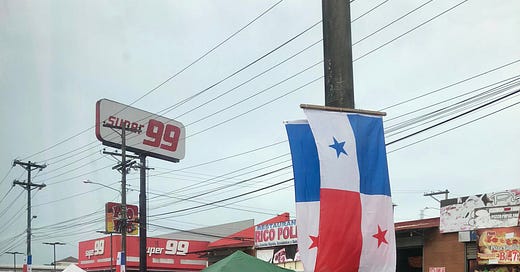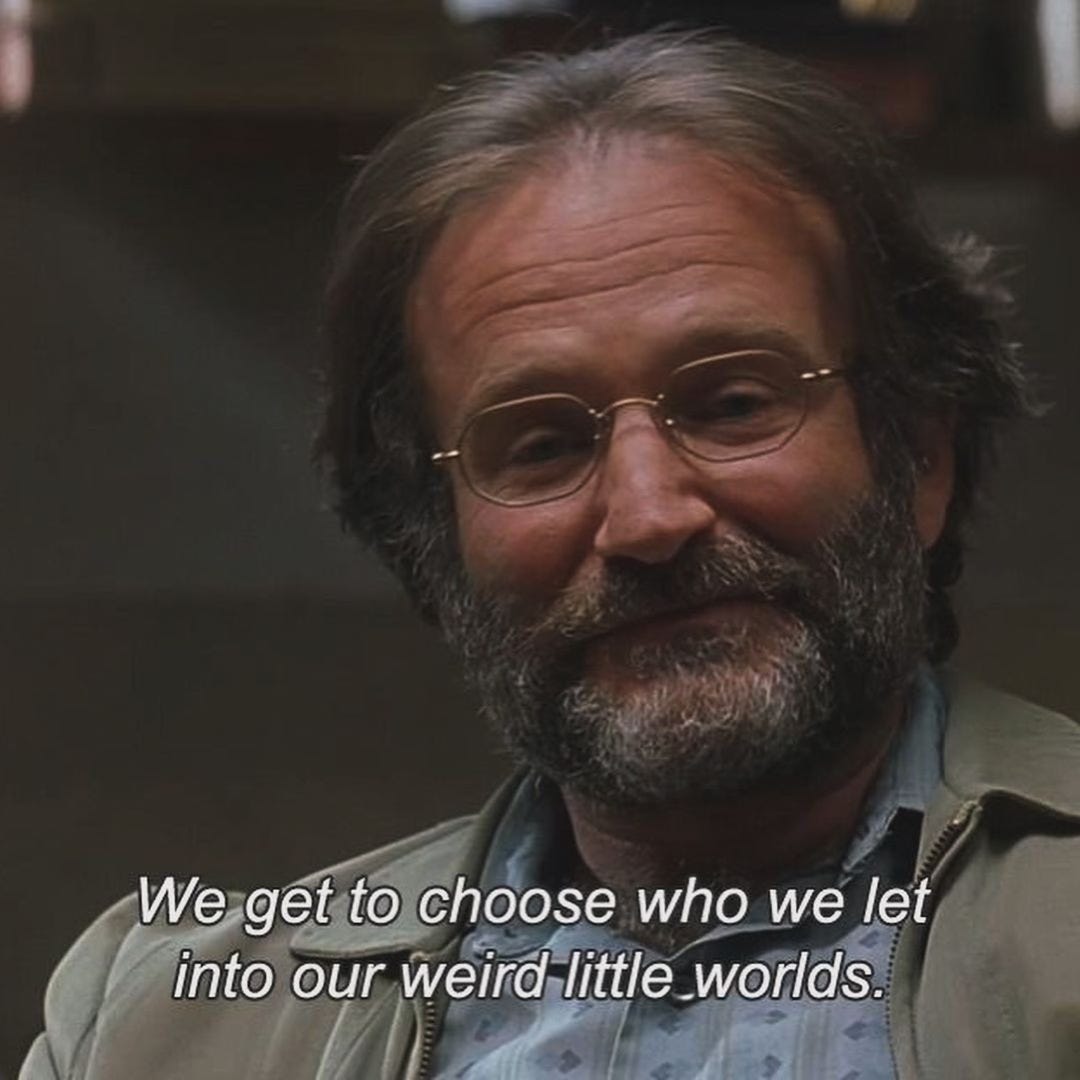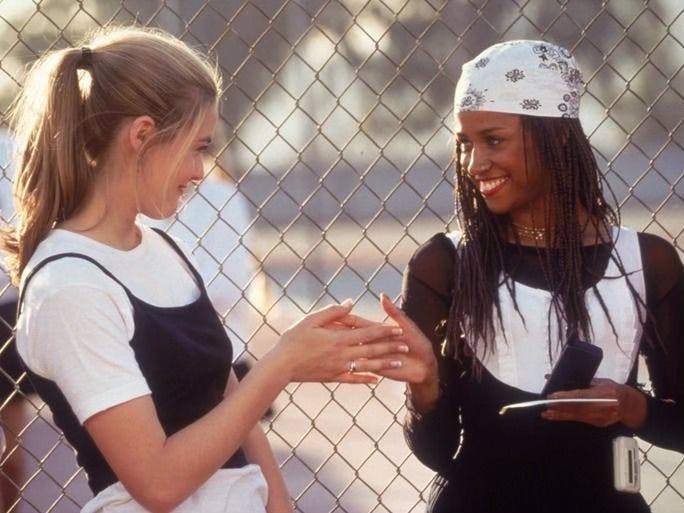[GUEST] What Does Community Care Look Like in an Anxious Generation? by Minaa B
The struggle for belonging while holding space for fear
Optionality advisor Minaa B has launched a new media company that speaks to one of my favorite areas of interest: Bridging pop culture, music, and personal healing. By exploring art and entertainment as forms of healthy escapism, I’m So Mature uncovers how cultural moments can guide us through growth, self-discovery, and emotional maturity.
Subscribe to I’m So Mature to get her insights as both a licensed social worker with over a decade of experience as a therapist and a pop culture maven in your inbox. Read on, and you’ll see why you need I’m So Mature in your life! -Elisa
What Does Community Care Look Like in an Anxious Generation? by Minaa B
Lately, I’ve been thinking about the concept of community care from a cultural lens. I was born in the U.S., but both of my parents were born in Colón, Panama, and raised in San Andrés, Colombia. When my mother and I travel back home to Panama to visit my family, we usually stay at my grandfather's house. While there, people constantly knock at his door, dropping by without notice to chat or check on him. Sometimes, his neighbor across the hall appears with plates of food, blessing us with the comfort of a home-cooked meal. If it's not a knock at the door, you'll hear someone shouting from the street—when you look out the window, it's just a friend wanting to say hello or check in. Who needs a cell phone when you can just shout from the street at someone's window, right? There's a continuous flow of community care, with people checking in and being checked on, and nobody seems to be annoyed or burnt out by it
Culture & Community
In cultures where community care is normalized, connection is effortless and expected. In contrast, in America, the expectation of self-sufficiency—paired with anxiety around social interactions—makes spontaneous connection feel overwhelming rather than natural. The little acts of community care that I witness in Panama are ways of being that would likely irritate many people in America. I don't know many people in the U.S. who would welcome someone showing up to their house unannounced—many people don't even want someone calling their phone. A phone call is now seen as "invasive because they demand an instant response," according to writer Brianna Wiest, who shares insight into how millennials view phone calls. Gen Z shares similar beliefs about phone calls, “hating” them and preferring texting instead.
Are Americans burnt out? Absolutely, but burnout is not the only reason we are living in a lonely and disconnected society. Fear and anxiety are also stripping us of our ability to be connected.
“The silence on the other end of phone calls is terrifying. Are they silent because they’re fuming with incandescent rage on the other end? Or because they’re distracted or focused on something else? Without the visual element, you just don’t know,” writer Shaedon shares for Fashion Journal.
Loneliness, burnout, social anxiety, and other mental health conditions are becoming a prevalent issue in American culture. A big question we need to ask ourselves is: What does community care look like in an anxious generation? Do people actually want connection, or do they want convenience?
Help Optionality deliver news you can use!
Maturing is recognizing when your beliefs and anxious thoughts hinder you from building the intimacy, community, and connections you desire.
The Core Elements of Community & Belonging
Despite our anxiety around connection, community care has the power to alleviate loneliness and create a sense of belonging—something we deeply need but often resist. It’s important to recognize that community care happens when people engage in:
Reciprocity
Vulnerability
Mutual aid
Respect
Active listening
Intentional effort
Repeated encounters
How Fear Hinders Connection
Cognitive distortions are thinking errors that impact our ability to form healthy connections with the potential to thrive. It's hard to build connections with people when your baseline is fear.
Fear of the unknown
Fear of communication
Fear of feedback
Fear of asking for help
Fear of messing up
Fear of not knowing what to say
Fear of saying the wrong thing
Fear of not doing it “right” the first time
Fear of letting your guard down
Fear of trusting people
Fear of letting yourself be seen
If we let fear dictate our relationships, we risk further isolation. So, how do we overcome these fears and embrace community care in a manageable way? We take small steps toward healing.
Building Connections While Anxious
If anxiety makes it hard to form new connections, try easing into it with intentional small steps:
Start small. Connection doesn’t have to mean deep, soul-baring conversations. A simple “good morning” to a neighbor or a casual chat with a barista can help you practice engaging with others.
Communicate your needs. If social interactions drain you, set boundaries around when and how you connect. It’s okay to let people know that phone calls feel overwhelming, but texting works better for you.
Reframe social anxiety. Instead of assuming others are judging you, remind yourself that most people are focused on themselves. Shift your mindset from “What if I embarrass myself?” to “What if this person is just as nervous as I am?”
Find low-pressure environments. Engage in activities where connection happens naturally, like book clubs, workout classes, or volunteer groups. Being part of a shared experience can make interactions feel less forced.
Practice self-compassion. You won’t always say the perfect thing or feel completely at ease in social settings—and that’s okay. Allow yourself to be human and give yourself credit for trying.
Practice Receiving Care – If someone reaches out to you, accept the gesture instead of assuming you're a burden. Let people show up for you.
Anxiety—a state of chronic fear and worry—can be so debilitating that it impacts our ability to thrive and function well, diminishing both our quality of life and capacity to form connections. Yet we are humans who are biologically wired to connect with others through all our senses, from hearing to touch. The next time you feel afraid during a social interaction, remember that fear is simply an emotion, just like happiness. Emotions flow through our bodies like a revolving door—they come in, but they never stay permanently. They leave and return depending on our circumstances, yet they always pass through again and again.
The Takeaway: You can't hide and expect to be seen
Even in an anxious generation, community care remains essential. True connection isn't just about convenience—it's about showing up, being vulnerable, and creating spaces where we can support one another, even when it feels uncomfortable. Connection requires effort, but it doesn't have to be overwhelming. Small, intentional steps can help you build meaningful relationships.
Thanks for sharing your work with the Optionality community, Minaa B. Now back over to all of you: What themes from this piece resonated with you? Leave a comment, and don’t forget to subscribe to I’m So Mature!










I love this piece. While so much of this seems ingrained in our shared experiences, it's becoming a lost art. Our kids are growing up without ever experiencing spontaneous knocks on the door, calls, or check ins. In our quest for productivity we've lost the meaning that holds all of our activities together.
Thanks for sharing. I am glad that we are having more of these conversations. #flourishingforall